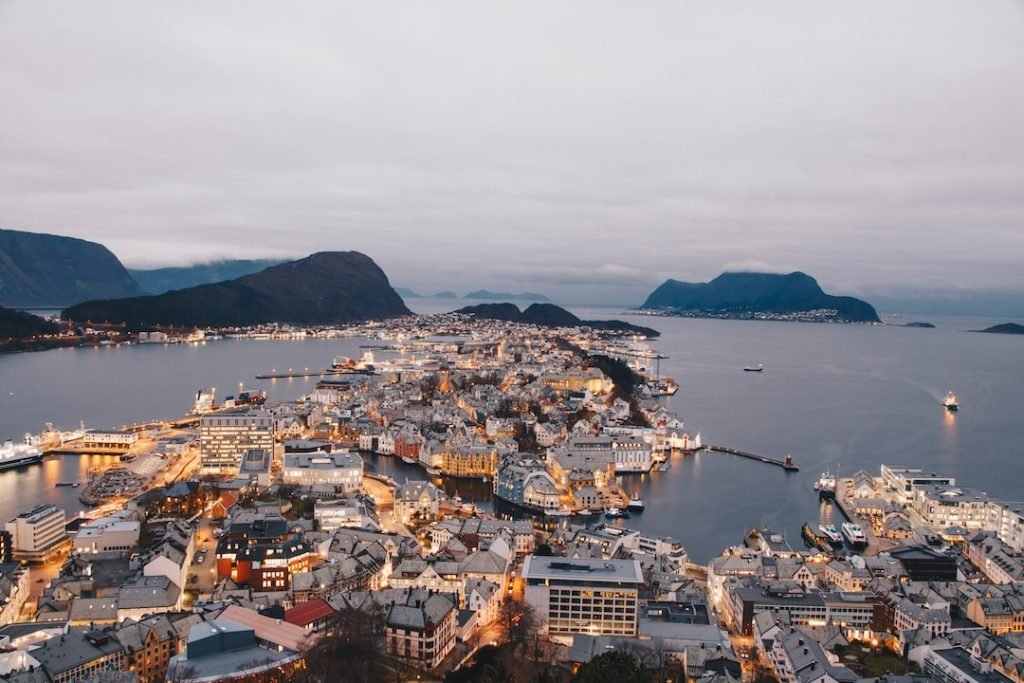

Exploring Norwegian Culture: Vocabulary Related to Traditions and Festivals
Norway, located in Northern Europe, is known for its stunning natural landscapes, rich history, and vibrant cultural traditions. The country is characterized by its fjords, mountains, and northern lights, making it a popular destination for tourists from around the world. Norwegian culture is deeply rooted in its history and geography, and cultural traditions play a significant role in Norwegian society.
Norway has a long and fascinating history that dates back thousands of years. From the Viking Age to the present day, the country has seen various influences from neighboring countries and cultures. The geography of Norway, with its rugged terrain and harsh climate, has shaped the way of life for its people. The importance of cultural traditions in Norwegian society cannot be overstated. These traditions are passed down from generation to generation and are seen as a way to preserve the country’s unique heritage.
Table of Contents
ToggleVocabulary related to Norwegian festivals and celebrations
During festivals and celebrations in Norway, there are certain phrases and words that are commonly used. These expressions often reflect the joyous and festive atmosphere of the occasion. For example, “Gratulerer med dagen” is a phrase used to congratulate someone on their birthday or on Norway’s Constitution Day. “Skål” is a word used to toast during celebrations, often accompanied by raising a glass of aquavit or beer.
Norway has several popular festivals and celebrations throughout the year. One of the most well-known is Midsummer’s Eve, or St. John’s Eve, which takes place on June 23rd. This celebration marks the beginning of summer and is characterized by bonfires, music, dancing, and traditional food. Another popular festival is Christmas, which is celebrated with family gatherings, feasts, and the lighting of candles on Christmas Eve.
The significance of national holidays in Norway
Norway has several national holidays that hold great historical significance for its people. One of the most important is Constitution Day, which is celebrated on May 17th. This day commemorates the signing of Norway’s constitution in 1814 and the country’s independence from Denmark. Norwegians celebrate this day with parades, flag-waving, traditional costumes, and speeches.
Another significant national holiday is Christmas, which is celebrated on December 25th. Christmas in Norway is a time for family gatherings, feasting, and exchanging gifts. Norwegians also celebrate Easter, which is a religious holiday that marks the resurrection of Jesus Christ. During Easter, families gather for meals and children participate in Easter egg hunts.
Traditional Norwegian clothing and accessories
Traditional Norwegian clothing, known as bunad, is still worn on special occasions and festivals. The bunad varies depending on the region of Norway and can be traced back to the 18th and 19th centuries. The bunad is often made of wool and features intricate embroidery and patterns. It is typically worn with silver jewelry, such as brooches, rings, and necklaces.
In modern Norwegian fashion, traditional clothing elements are often incorporated into everyday wear. For example, sweaters with traditional patterns are popular among both locals and tourists. Additionally, accessories such as scarves and hats with traditional designs are commonly worn during the colder months. The traditional clothing of Norway not only represents the country’s history but also serves as a source of pride for its people.
The role of food in Norwegian culture and festivals
Food plays a significant role in Norwegian culture and is often a central part of festivals and celebrations. Traditional Norwegian cuisine is known for its simplicity and use of local ingredients. Fish, particularly salmon and cod, is a staple in Norwegian cuisine. Other popular dishes include rakfisk (fermented fish), lutefisk (dried fish), reindeer meat, and cloudberries.
During festivals and celebrations, Norwegians often gather for large feasts where traditional dishes are served. For example, during Christmas, families come together to enjoy a meal of ribbe (roast pork), lutefisk, and traditional Christmas desserts such as rice pudding and gingerbread cookies. Food is not only a way to nourish the body but also a way to connect with others and celebrate Norwegian culture.
Norwegian music and dance traditions

Norwegian music and dance traditions are deeply rooted in the country’s history and culture. Traditional Norwegian music is characterized by its use of folk instruments such as the Hardanger fiddle, accordion, and mouth harp. The music often tells stories of Norwegian folklore and mythology.
Traditional Norwegian dances, known as folk dances or “bygdedans,” are an important part of Norwegian culture. These dances vary by region and often involve intricate footwork and lively movements. Some popular Norwegian dance styles include the halling, springar, and pols.
The importance of nature in Norwegian culture
Norway’s natural landscape has had a profound influence on its culture and traditions. The country’s fjords, mountains, and forests are not only breathtakingly beautiful but also provide a source of inspiration for art, literature, and music. Norwegians have a deep appreciation for nature and often engage in outdoor activities such as hiking, skiing, and fishing.
Norwegians also celebrate and appreciate nature through various festivals and traditions. For example, during Midsummer’s Eve, bonfires are lit to ward off evil spirits and celebrate the summer solstice. Additionally, the Sami people, who are indigenous to Norway, have a strong connection to nature and celebrate their culture through reindeer herding and traditional crafts.
Traditional Norwegian sports and games
Traditional Norwegian sports and games are a fun way for Norwegians to come together during festivals and celebrations. One popular sport is ski jumping, which has a long history in Norway. Ski jumping competitions are held throughout the country, and Norwegians take great pride in their ski jumpers’ achievements.
Another traditional Norwegian game is kubb, which is similar to the game of horseshoes. Kubb involves throwing wooden batons at wooden blocks, with the goal of knocking down the blocks. This game is often played during summer festivals and gatherings.
The role of religion in Norwegian festivals and traditions
Religion has played a significant role in shaping Norwegian culture and traditions. Norway was originally a pagan country, with Norse mythology being the dominant belief system. However, with the arrival of Christianity in the 11th century, the country underwent a religious transformation.
Today, Christianity is the largest religion in Norway, with the majority of Norwegians belonging to the Evangelical Lutheran Church. Christian holidays such as Christmas and Easter are widely celebrated in Norway, with religious services and family gatherings. However, many Norwegians also incorporate elements of Norse mythology into their celebrations, such as the use of Yule logs during Christmas.
Norwegian folklore and mythology
Norwegian folklore and mythology are rich with tales of trolls, giants, and mythical creatures. These stories have been passed down through generations and continue to be an important part of Norwegian culture. Some popular folktales include “The Three Billy Goats Gruff” and “The Princess and the Troll.”
In addition to folktales, Norse mythology also plays a significant role in Norwegian culture. The gods and goddesses of Norse mythology, such as Odin, Thor, and Freya, are often depicted in art, literature, and music. The influence of Norse mythology can be seen in various aspects of Norwegian culture, from traditional clothing designs to the names of landmarks.
Conclusion:
Norwegian culture and traditions are deeply rooted in the country’s history, geography, and natural beauty. From traditional clothing to festive celebrations, Norwegians take great pride in preserving their unique heritage. By learning about Norwegian culture and traditions, we can gain a deeper appreciation for the country and its people. So, whether it’s exploring the stunning landscapes, trying traditional Norwegian dishes, or participating in festivals and celebrations, there are countless ways to immerse oneself in the rich and vibrant culture of Norway.
If you’re interested in learning more about Norwegian culture and traditions, you may also find the article “Embracing Syttende Mai: Celebrating the Norwegian Constitution Day” informative. This article delves into the significance of Syttende Mai, Norway’s national day, and explores the various customs and festivities associated with this important holiday. From parades and flag-waving to traditional costumes and delicious food, Syttende Mai is a celebration that truly embodies Norwegian pride and heritage. To read more about this vibrant cultural event, click here.
If you want to learn Norwegian, you can register for classes here. We look forward to hearing from you and helping you become fluent in Norwegian.





